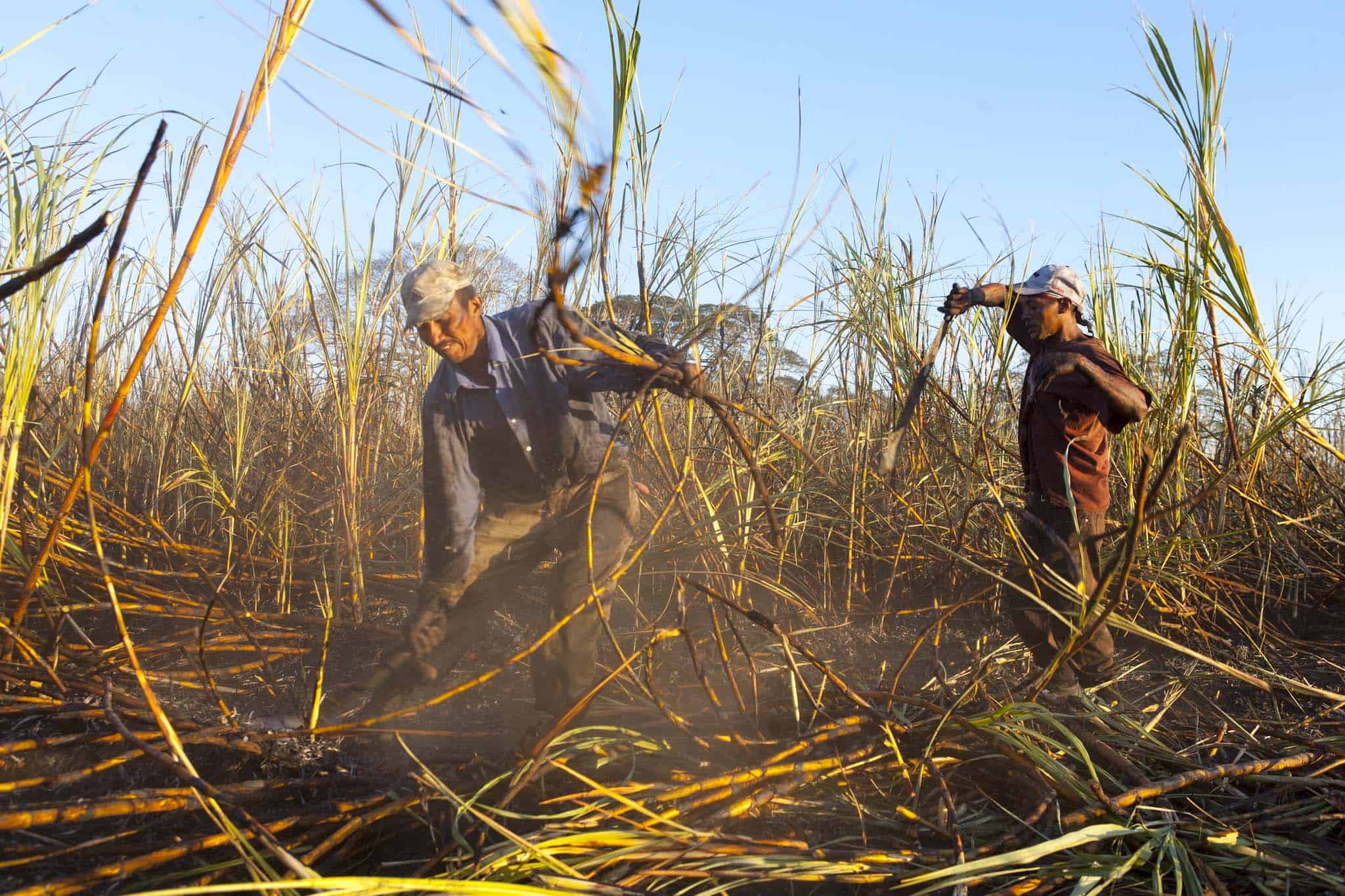AT 2 a.m., 15-year-old Eduardo Sand quietly slips out of his house to begin a long day of work at the trapiche, the traditional sugar mill used to press the juice from freshly cut cane. Sandi has helped his grandfather at trapiches since he was five. At first, he held the candles needed for light; then, as he grew older, he stoked the fires with wood and tended the oxen that powered the mill. Over the years, he learned all the steps in the complex process of making the blocks of brown sugar called tapas.
His grandfather even told him the secret of how to know when the thick, bubbling cane juice is ready to be cooled and pressed into molds. But that day, he had a special reason for getting an early start – when his father arrived at daybreak, he saw that his son had produced a batch of tapas completely on his own for the first time.
THAT was 21 years ago. Since then, as roads were built and trucks replaced oxcarts, it became easier for farmers to transport cane to a central location for processing. Trapiches, and the know-how Sandí learned from his grandfather, began to vanish. Now Sandí is preserving a bit of Costa Rican history by doing traditional trapiches with his family, neighbors and visitors.
At the hilltop farm 26 kilometers (16 miles) south of Santiago de Puriscal, southeast of San José, Sandí has built a fire pit lined with large rocks and topped with packed earth. Atop the pit sits a wide, iron cauldron with the modern addition of stainless-steel sides to prevent the hot cane juice from splattering. At one end is a trench dug one meter deep (about 3 1/4 feet) for the person who feeds wood to the fire. At the other end, a blackened earth chimney allows smoke to escape.
TRADITIONAL sugar mills used to be powered by two oxen. Electric motors replaced the oxen about 15 years ago when electricity came to this area. Sandí’s trapiche has both types of power sources. Cane juice flows from the mill into buckets and the crushed stalks of cane are stacked off to the side to be fed to livestock. Sandí’s brother takes a handful of the bark of the Guácimo tree and swirls and squeezes it in a bucket of juice.
This bark soaks up any impurities before the juice is poured into the cauldron for cooking. Initially the fire is fueled with coffee wood, followed by other types of firewood. At the point when the hottest fire is needed, Sandi burns bamboo. Patches of bamboo still grow throughout this part of the country, planted decades ago by farmers who needed a supply of it near their trapiches. As the juice cooks, condensed steam fills the nostrils with the smells of new-mown hay and a hint of molasses.
The color changes from a pale yellowish green to amber. A neighbor stirs the cauldron with along ladle then scoops ladles of juice and pours them through the air to cool.
ABOUT halfway through the three-hour cooking process, the espuma is ready. Thefoam that forms at the top of the boiling juice makes a warm, sweet “soup,” which is eaten from bowls with pieces of crushed cane used as spoons. As the juice bubbles and cooks, it becomes thicker, and the color darkens. Some is dropped into a bowl of cool water where it becomes a delicious, gooey mass called, melcocha.
People pull off bite-sizepieces as the bowl is passed around.When the thick juice is ready, it ispoured into a large, wooden trough where itis mixed with a wooden paddle as it cools.Sandí then presses the soft, brown sugar intomolds cut into a thick plank. After furthercooling, he inverts the plank over a bed ofcrushed cane stalks and pounds the backwith a mallet to release the tapas. Later,stacks of four tapas are wrapped and tied incane leaves to form tamugas.
SANDÍ’S wife Dinia mixes the soft, brown sugar with powdered milk and crushed peanuts to form a type of candy. Cocoa, mint or cheese – yes, cheese – maybe used to make other flavors. Some are broken into bite-size pieces for tasting, and some cool as a loaf in a shallow basket made of banana stalk.






